Introduction to Sempervivum Arachnoideum
Welcome to the intriguing world of Sempervivum Arachnoideum, or as it’s more commonly known, the ‘Cobweb Houseleek.’ This perennial charmer is not your average succulent. Cloaked in a unique cobweb-like filament, it adds a touch of mystique to rockeries, alpine gardens, and succulent displays alike. Belonging to the succulent family, these hardy plants are adapted to survive in some of the most challenging environments, embodying resilience and beauty combined.
With common names as whimsical as ‘Hen and Chicks’ and ‘Cobweb Hens,’ they sweep gardeners off their feet with their low maintenance and quirky appearance. They beckon both the curious beginner and the seasoned gardener with their ability to thrive in drought-prone conditions, making every corner of the garden a potential stage for their show.
The webbed rosettes of Sempervivum Arachnoideum might look delicate, but don’t be fooled—these hardy succulents are champions of survival, braving freezing temperatures with the same ease as scorching summer heat. They make an excellent choice for gardeners aiming to achieve that picturesque, evergreen carpet without the backbreaking toil usually associated with traditional lawns.
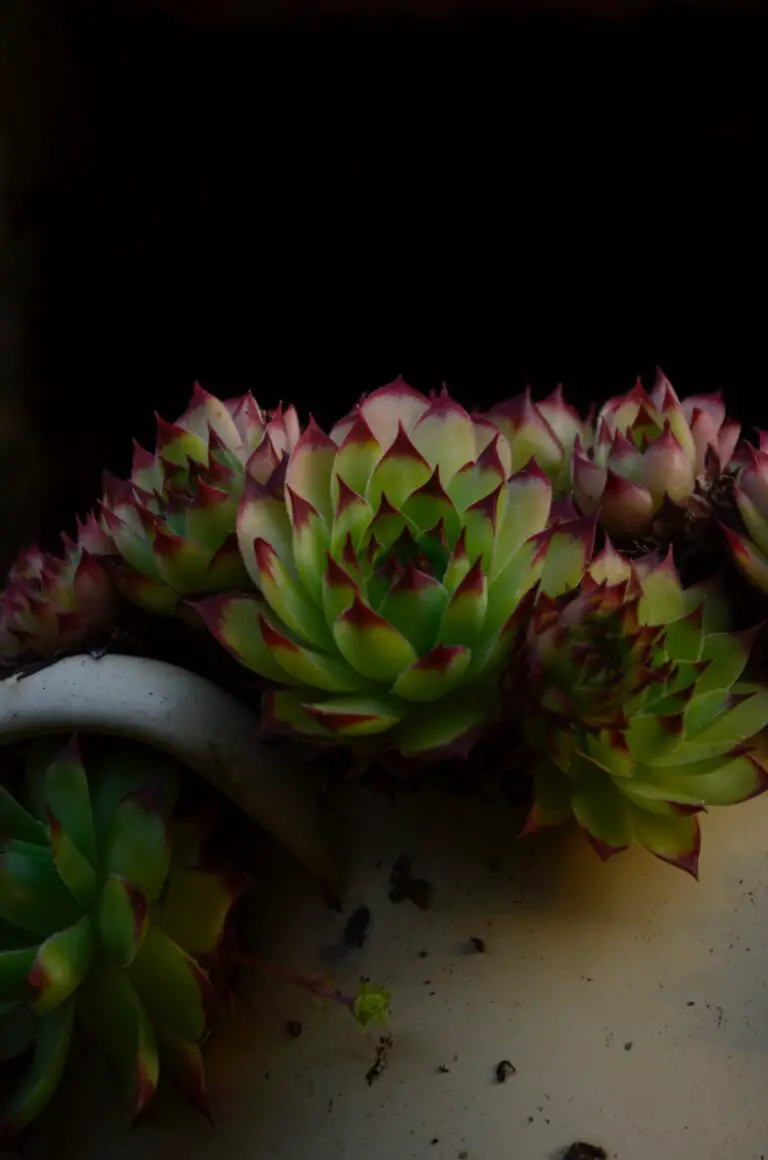
Whether incorporating them into a green roof project or introducing them to an indoor terrarium, these plucky plants have a way of spinning their web around hearts, binding enthusiasts to their spunky charm. Enhanced by broad, fleshy leaves that redefine the conventional palette of greenery, Sempervivum Arachnoideum is a testament to nature’s creativity. And speaking of creativity, you might want to explore further avenues in the realm of succulents with some ingenious propagation tips that will expand your green family with ease.
Embrace the allure of these captivating succulents and experiment with their versatility across gardening styles. From ornamental pots gracing sunny patios to creating contrasts with soft-textured plants, Sempervivum Arachnoideum invites you to discover its secrets and, in doing so, uncover a newfound passion for the delightful world of succulents.
Origins and Habitat
Embark on a journey to the rugged mountain terrains and discover the cradle of the sempervivum arachnoideum, a plant that has mastered the art of survival against all odds. Indigenous to the high altitudes of the European Alps, this tenacious succulent clings to rocky outcrops, soaking in the crisp alpine air and basking in the sparse embrace of the sun. Its homeland is a tapestry of harsh climatic twists—intense cold snaps, blazing daylight, and piercing winds—yet within this unwelcoming theatre, the sempervivum arachnoideum has found its niche and flourishes.
In this beacon of resilience, garden enthusiasts will find an inspiration; replicating the alpine conditions in our garden could be the ultimate homage to this plant’s heritage. Mimicking its natural habits, one must consider the garden as a canvas, accentuating it with well-draining soil to mirror the loose, gravelly terrains of the Alps. Ensuring exposure to ample sunlight, while also introducing some partial shade, could emulate the play of light and shadow found in its mountainous abode.
Be advised, however, that the climate the sempervivum arachnoideum naturally endures is not for the faint of heart. Its native realm undergoes substantial temperature drops when night falls, challenging the plant to adapt or perish. Nevertheless, in our gardens, while some areas might not face such extremes, we can still succeed by providing good air circulation and avoiding waterlogged conditions, thus fostering an environment where this hardy gem can thrive just as in the wild.
For those smitten by the unique charm of the sempervivum arachnoideum and keen on understanding its care demands, here’s a resource that sheds light on nurturing these natural wonders, ensuring they dazzle in our domestic landscapes just as they do in their alpine sanctuaries.
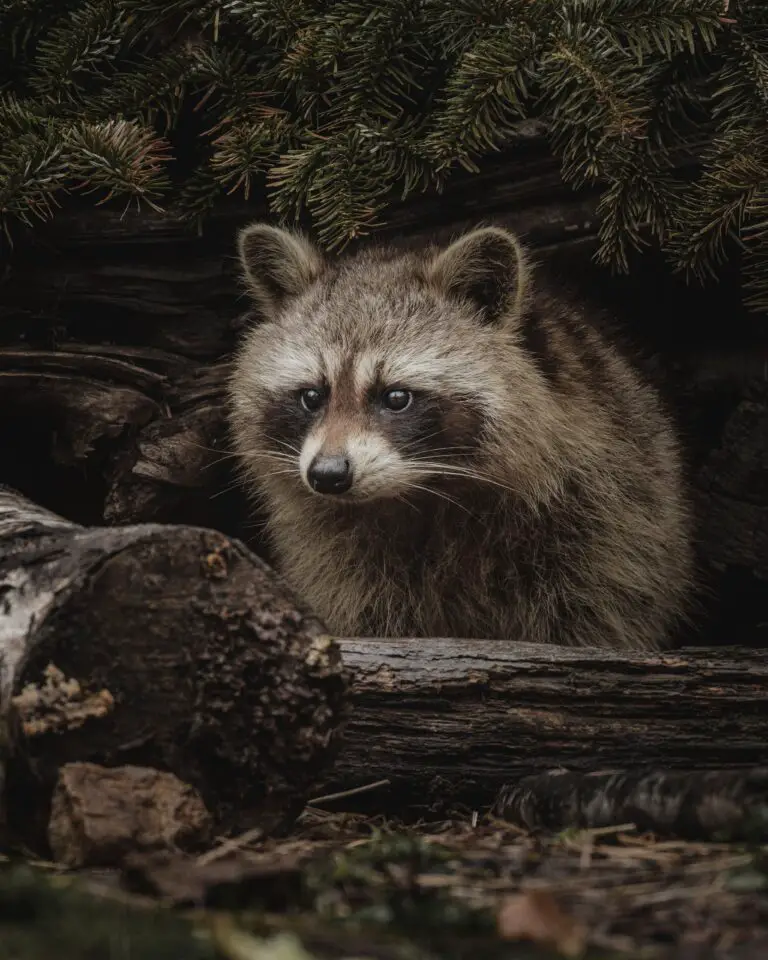
Distinctive Traits and Varieties
Within the realm of succulents, the Sempervivum Arachnoideum, also known as the cobweb houseleek, intrigues with its unique aesthetics. What really sets it apart? Let’s delve into the alluring world of this succulent and discover what makes it a captivating choice for plant enthusiasts.
A Kaleidoscope of Leaves
The Sempervivum Arachnoideum exhibits a mesmerizing array of leaf colors, ranging from deep greens to striking red tips. The leaves themselves boast a fleshy, tactile appeal that hints at their ability to retain moisture. It’s common to witness a transformation in hue as the seasons shift, creating a dynamic display that can become a focal point in any garden.
Rosette Formations Galore
Rosette formations in Sempervivum Arachnoideum are remarkable, mimicking the symmetry and beauty of a floral bloom. These geometrically pleasing clusters can vary greatly in size, with some reaching the breadth of a saucer. The clusters’ compactness contributes not only to their aesthetic value but also to their resilience in harsh growing conditions.
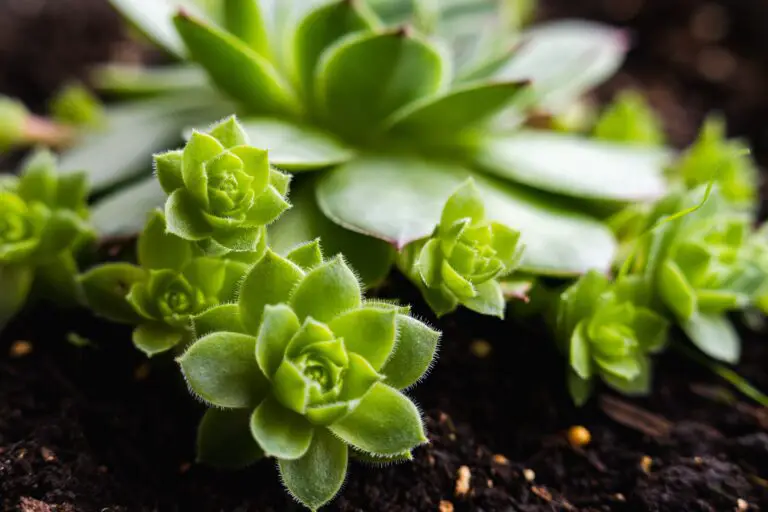
The Cobweb Connection
Perhaps the most striking attribute is the spider silk-like cobwebbing stretching atop the rosettes. It’s not just a whimsical touch; this unique adaptation provides protection from intense sunlight and herbivorous predators. It’s a survival tactic that’s as practical as it is enchanting, and it solidifies the Sempervivum Arachnoideum‘s position as a plant with both brains and beauty.
Within the family, you’ll discover a variety of Sempervivum Arachnoideum, each with its own brand of charm. ‘Rubrum’ entices with ruby-red tips, while ‘Cebenese’ touts a denser weave of cobwebbing. These varieties demonstrate the succulent’s adaptability and the breadth of its natural artistry.
For those captivated by the allure of succulents, having a comprehensive understanding of their care is crucial. A visit to the Ultimate Guide to Succulent Care can be enlightening, offering insights to enhance the well-being of these resilient yet delicate plants.
From their unique survival strategies to their decorative possibilities, Sempervivum Arachnoideum varieties offer a rare blend of natural wonder and horticultural splendor. Diving into the exploration of these superb succulents can be as rewarding as it is enchanting, providing a living tapestry of color and form to any garden or collection.
Cultivation Essentials
Let’s get our hands dirty and dive into the nitty-gritty of cultivating your very own Sempervivum arachnoideum, also fondly known as the cobweb houseleek. Imagine a clump of these fascinating little succulents, with their intricate webs, taking the spotlight in your garden. Ready to make that vision a reality? Here’s how!
Let There Be Light!
First things first, sun exposure is crucial. These resilient plants adore the sun and thrive with at least 6 hours of direct sunlight a day. Picture them like miniature sunbathers, basking in the golden glow. A south-facing window or a spot in the rock garden where they can soak up those rays will keep them happy and healthy.
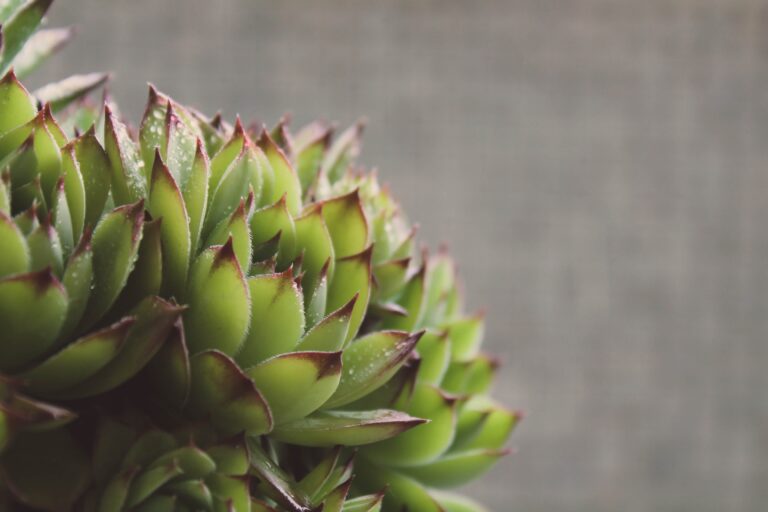
Soil: The Foundation of Life
Now, let’s talk terrain. These succulents are not fussy about their footing but they do demand well-draining soil. Imagine trying to put roots down in wet socks – not pleasant, right? Mimic their natural habitat by mixing in sand or gravel with your soil to create that perfect drainage scenario that makes for cozy, dry root beds.
Watering: A Balancing Act
Watering your Sempervivum arachnoideum is a delicate dance. Too much and you’ll witness the heartbreaking sight of rotting roots, too little and they’ll shrivel up. During the growing season, water only when the soil feels dry to the touch, and imagine giving your plants just enough to quench their thirst – a gentle, infrequent drink is all they need. In the winter, reduce the frequency even more; think of it as their hibernation period.
Seasonal Shifts: Adapting to Change
These hardy little troops can endure harsh conditions, but they still need a seasonal strategy. Come spring, it’s like a new beginning. Reassess the soil and watering, and perhaps offer a token of nutrition in the form of a mild fertilizer. As summer scorches on, protect them from excessive heat that could scorch their delicate leaves – a little afternoon shade can work wonders.
When autumn paints the garden with colors, it’s time to prepare your Sempervivum arachnoideum for cooler days. Reduce watering and make sure they’re shielded from heavy rainfalls. In the icy grip of winter, they’ll need your watchful eye to ensure they stay dry, and if you’re in a particularly frosty area, a bit of protection like a glass cloche can prevent frostbite.
With these essentials in mind, your Sempervivum arachnoideum will not just survive; they’ll flourish, creating a tapestry of living art in your garden that will captivate and inspire. Happy planting!
Planting and Propagation Techniques
Unlocking the myriad mysteries of Sempervivum Arachnoideum, also known as cobweb houseleek, begins with understanding its innate resilience. To successfully plant this captivating succulent, select a site that embodies its natural alpine habitat—think well-draining soil with plenty of grit. A top tip: mimic rocky crags by providing a lean yet sturdy blend of soil coupled with sand or perlite, ensuring your arachnoideum’s roots aren’t left soaking.
When settling your arachnoideum into its new home, press it lightly into the soil’s surface. Here’s the kicker—this succulent adores a snug fit! Picture a hen nestling her chicks beneath her; that’s the level of cozy we’re aiming for. Once nestled, water sparingly; overzealous hydration is the nemesis of sempervivum success.
Turning our attention to propagation, the cobweb houseleek presents a propagator’s paradise. Offsets, also whimsically termed ‘chicks’, eagerly spring forth from their parent ‘hen’, demanding minimal effort for their liberation. Gently tease these babies free and voilà, you’ve got potential new plants. Another approach? Leaf cuttings. While slower, this method is a marvel of nature, turning a singular leaf into a full-fledged rosette.
Here’s a real-life example to illustrate: imagine a grandmother dividing her cherished plant to create a living legacy. She instills growth by sharing offsets with family, spreading the sempervivum love, and ensuring the cycle of life continues. This is the essence of sempervivum propagation—simple yet profoundly rewarding.
Now feast your eyes on this beauty: the webbed wonder of the cobweb houseleek in all its glory.

For more insights into thriving gardens, take a peek at our comprehensive guide on cultivating other vibrant succulents. Whether you’re a seasoned gardener or a green-thumbed newbie, something beautiful awaits to burgeon under your care.
Patient persistence is key—treat each sempervivum arachnoideum with the same anticipation as cultivating a precious gem. With each season, you’ll witness a spectacle of survival and beauty, a testament to the sheer tenacity of these rugged alpine wonders.
Common Pests and Problems
If you’ve ever been entranced by the web-like charms of the Sempervivum arachnoideum, also known as the cobweb houseleek, you’re not alone. These succulents are a garden favorite, but even the toughest plants have their Achilles’ heel. Let’s unravel the tangled web of pests and problems that might besiege your Sempervivum and learn how to fight back.
We’ll spin the tale starting with aphids. These tiny critters are like the paparazzi of the plant world; they just can’t get enough of new growth. But with a sharp stream of water or the enlistment of ladybugs, these pests can be sent packing. Remember, it’s a battle of persistence, so regular checkups are your best bet.
But what if the aphids bring friends? Say hello to mealybugs and scale insects—the clingy kind that love to suck the life out of your plants. For these, you may need to up your game. A cotton swab dipped in alcohol can help evict these unwelcome squatters. It’s the plant equivalent of a bouncer tossing out troublemakers.
Not to spin a yarn of doom, but fungal issues like root rot can also crash the party, especially if your soil mix is holding more water than the Titanic. The solution? Make sure your soil is as well-draining as a colander. Pumice or perlite can be the life vest your Sempervivum needs to stay afloat in wet conditions.
And let’s not forget the menace of the spider mites. These tiny terrors weave a web of destruction that’s not the work of your Sempervivum. Regular misting or introducing predatory insects can nix these nightmares. Just like turning the tables on a bad dream, you can wake up to a healthy garden.
Finally, keep an eye out for those silent but deadly snails and slugs that throw surprise late-night feasts on your succulents. A little diatomaceous earth sprinkled around your plants is like setting up a no-entry zone. It’s the equivalent of rolling out barbed wire without the ugly look.
Here’s a glimpse of the enemy, but don’t let it scare you. It’s just nature’s way of keeping you on your toes in the garden game.
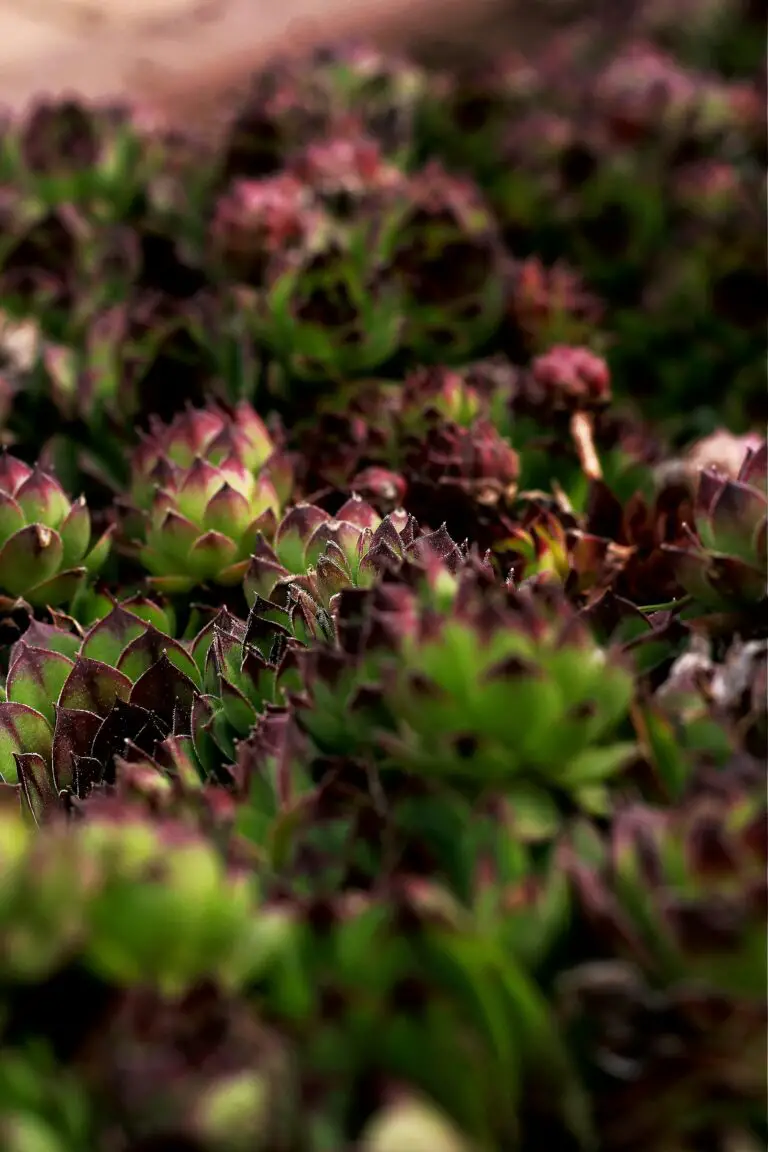
By staying vigilant and prepared, you’re not just growing Sempervivum arachnoideum; you’re nurturing a thriving green sanctuary free of uninvited guests. So, wear your gardening gloves like armor and defend your green kingdom!
Incorporating Sempervivum Arachnoideum into Garden Design
Imagine stepping into a garden where the harmony between drought-tolerant champions and the rustic elegance of a rockery coexists. That’s where the charm of Sempervivum arachnoideum, also known as the cobweb houseleek, weaves its magic into your garden narrative. These succulent beauties, with their rosette-shaped allure and spiderweb-like filaments, offer a unique texture and form to garden landscapes.
Rugged Grace in Rock Gardens
Rock gardens, the epitome of alpine tranquility, are a natural stage for the cobweb houseleek. Picture a cascade of these fleshy rosettes tumbling down a rocky slope or nestled among craggy boulders. Not only does their aesthetic meld seamlessly with the stones, but their ability to thrive in well-draining soil pits makes them perfect rock garden residents. Consider pairing them with other alpine stars like Phlox subulata or a creeping thyme ground cover that complements their drought tolerance and sun-loving nature.
Xeriscaping with Style
Xeriscaping doesn’t have to compromise on beauty, and Sempervivum arachnoideum is here to prove it. As water-wise gardening grows more popular in arid regions, incorporating these succulents into a tapestry of drought-resistant plants like lavender, sage, or agave, creates an enticing, low-maintenance oasis. They form a ground-hugging carpet that provides year-round color, texture, and a marvelous contrast to spiky or broad-leaf xeriscape companions.
Take a moment to see these ideas brought to life in the garden with this inspirational video:
Groundcovers Galore
Envision looking across your yard to see a lush carpet of green dotted with the striking reds and purples of Sempervivum arachnoideum. Groundcovers don’t get much tougher or more attractive than this. These succulents are ideal for filling in gaps between stepping stones, covering slopes for erosion control, or providing an evergreen base for seasonal blooms. They require next to no care – a true plant-it-and-forget-it addition to any garden!
Companion Planting Conversation
Let’s talk companion planting with Sempervivum arachnoideum. These hardy specimens share their space amicably with many other plants. They’re not just about good looks; they help retain soil moisture and suppress weeds. Pair them with Mediterranean herbs like rosemary or oregano, which share their love for sunshine and scant water, and watch how they form a protective, living mulch for their companions, all while adding a burst of diversity to your plant palette.
Frequently Asked Questions
Caring for Your Sempervivum Arachnoideum
Have you ever marveled at the unique web-like structure of Sempervivum Arachnoideum and wondered how to keep these charming succulents happy? Well, you’re in luck! Imagine this: you’re in your sunlit garden, and there, thriving amongst your other plants, is your own Sempervivum showcase. It’s a satisfying scene, right? Let’s make it happen!
First things first, these succulents adore sunlight, so pick a spot that’s like a summer day at the beach—lots of sunbathing with occasional shade to cool off. Remember, though, too much direct sun can lead to a sunburn, even for plants, and nobody wants a crispy Sempervivum. Consider a location that offers a nice balance.
What about watering, you ask? Here’s a handy tip: treat your Sempervivum like you would a forgetful friend—only give it a drink when it’s really thirsty. Overwatering is a common misstep, but with well-draining soil, you’ll keep those roots as dry as a witty joke, preventing any chance of rot.
Propagating Like a Pro
Perhaps you’ve seen a Sempervivum and thought, “I wish I could multiply these beauties.” Well, guess what? You can! Propagation is like making a photocopy of your favorite plant. When you notice those little “chicks” sprouting from the “hen,” gently pluck them and plant them in their new home. It’s as simple as that. Just ensure they have the same comfy growing conditions as their parent plant.
For the full visual experience on how to care for your Sempervivum, check out this engaging video that we’ve unearthed for you. It’s brimming with tips and tricks for potting and showcasing these hardy succulents.
Overcoming Challenges
As with any plant, sometimes our green thumbs face challenges. If you notice your Sempervivum throwing a temper tantrum, perhaps with wrinkled leaves or a dull complexion, it’s time for an intervention. Often, this can be traced back to watering habits or lighting conditions. Adjust accordingly, and you’ll likely see a swift return to vibrance.
Are there pesky invaders setting up camp in your Sempervivum pot? Those could be aphids finding it as irresistible as we do. Don’t worry—this isn’t a siege that can’t be lifted. A soap and water mixture spritz can be your armor in this battle, knocking those tiny critters out of their stronghold.
Remember, caring for Sempervivum Arachnoideum isn’t complex sorcery; it’s about understanding its simple needs. So roll up those sleeves, and soon you’ll be the one sharing secrets on cultivating these fascinating plants.



